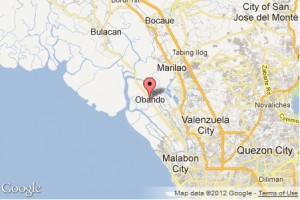
In a 90-page decision dated August 29 and released last Friday, the appeals court’s Former Tenth Division ruled that the EcoShield Obando landfill project complied with the requirements of the law and was certified by government agencies to be environmentally safe.
The court said it could not issue against the project a writ of kalikasan and temporary environmental protection sought by Concerned Residents of Obando led by one Ma. Theresa Bondoc because their plea “does not involve an environmental damage of such magnitude to warrant the issuance of [such writ.]”
Such a writ is available “when there is such a significant degree of environmental damage as to prejudice the life, health, and property of inhabitants in two or more cities or provinces,” the court said in the decision written by Justice Priscilla Baltazar-Padilla.
The other members of the division, Justices Jose Reyes Jr. and Agnes Reyes Carpio, concurred in the ruling.
The landfill is a project of the EcoShield Development Corp. (EDC) owned by businessman and former ambassador Antonio Cabangon-Chua and his son Edgardo. The company earlier acquired an environmental compliance certificate from the Department of Environment and Natural Resources-Environmental Management Bureau (EMB).
EDC proposed the project in October 2008 on the 44-hectare islet acquired in Barangay (village) Salambao, Obando. The barangay council of Salambao approved the project in December 2010 while the Obando municipal council issued a permit to construct and operate a landfill in January 2011.
The council also passed an ordinance reclassifying the project site from agricultural or commercial/industrial. This was later approved by the Bulacan provincial board.
However, residents, mostly fishermen and urban poor, opposed the landfill project and launched protest marches and signature drives against the project. They claimed the negotiations for the project were rushed and not transparent.
Environmentalists also aired concerns about the decimation of the mangrove forest along the barangay coast that contributed to the flooding in Obando while Roman Catholic faithful objected to what they regarded as the desecration of the site where the image of one of the town’s patron saints, the Nuestra Señora de Salambao, was found in 1793.
The Court of Appeals validated the reclassification, saying “all of the required documents were submitted and the procedure was substantially complied with.”
The court noted that the landfill’s location was suitable as it was set up on a body of water that was dried up, shored and fenced around.
“One of the reasons the EMB issued the ECC in favor of EDC is the fact that the location of the proposed sanitary landfill conforms with the minimum siting criteria and the minimum design criteria set under Republic Act No. 9003 or the Ecological Solid Waste Management Act of 2000,” the justices said.
They added that an environmental impact statement and public consultation were not required for the project.
The court gave credence to the testimony of the EDC architect, Rafael Tecson, and other officials who said the sanitary landfill was well-designed and would help the solid waste management problems in Obando. The company’s treasurer also said the company had already invested about P500 million in the project.
The components of the landfill project include leachate treatment plant, storm water detention pond, wetland treatment area, materials recovery facility soil stockpile area, waste cells and barge docking area.
The court said that the landfill would not run counter to the continuing mandamus issued by the Supreme Court in the 2008 case “MMDA vs. Concerned Residents of Manila Bay.”
“The establishment of the proposed sanitary landfill as a solution to deter the continuous and persisting waste disposal problem of Metro Manila is, in fact, evident from the pronouncement of the Supreme Court in the MMDA case,” the justices said.
They added that the protection of the environment, through the putting up of a pollution control facility like a landfill, should not be postponed because “there is a big threat to the environment due to illegal and indiscriminate dumping.”
While the technology was not absolutely proven, the court said, “this reason should not be interposed to delay the construction of the sanitary landfill.”
“It is time to give the project a chance to carry out its commitment to resurrect this waterway and provide solutions for proper garbage disposal,” the court added.
RELATED STORIES
Salambao landfill a threat to Obando residents